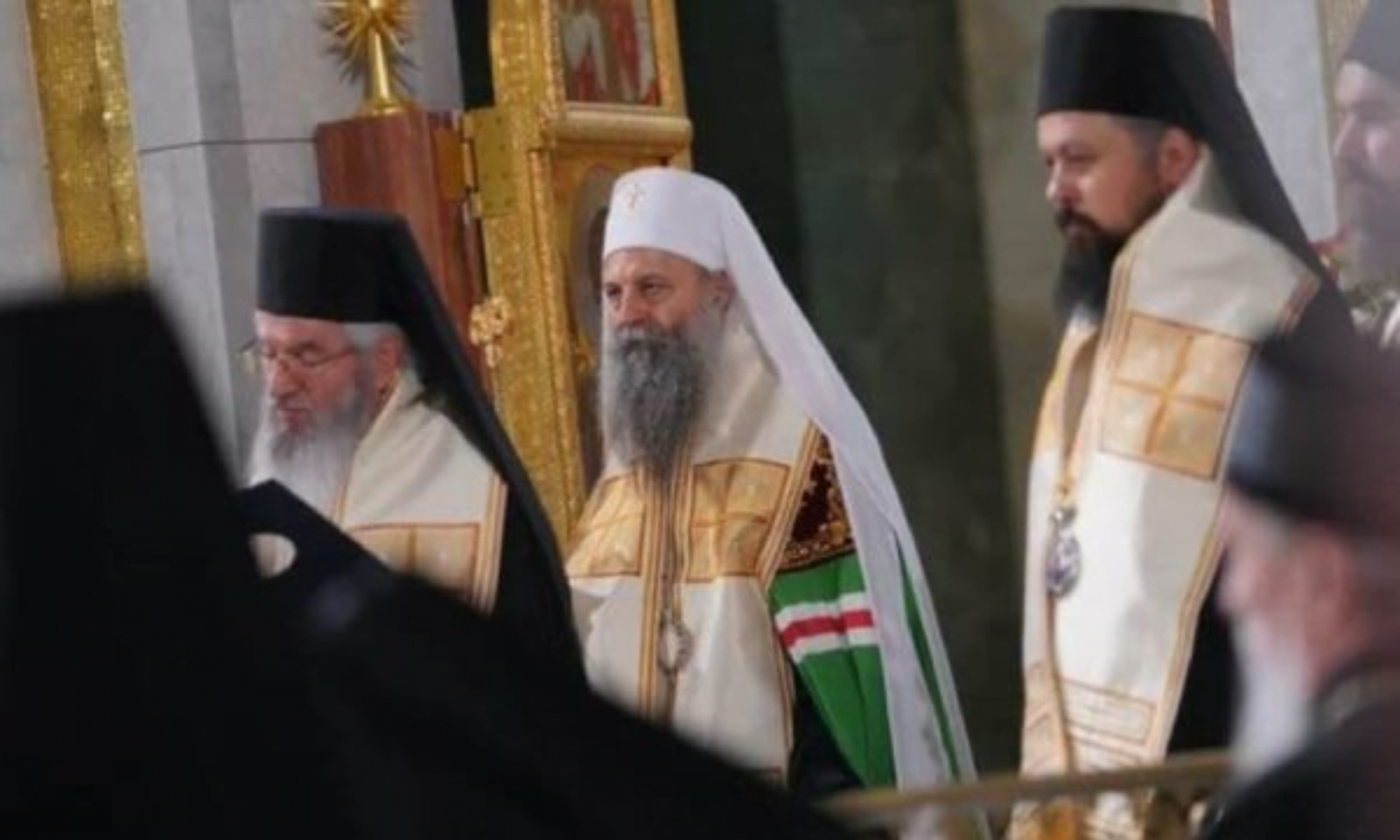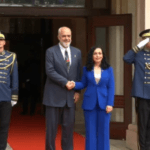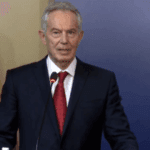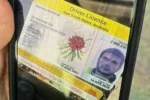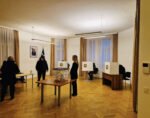While the main spokesmen of Serbian expansionist nationalism – politicians and social workers Aleksandar Vulin, Aleksandar Raković, Matija Bečković, Dragoslav Bokan and many other people close to the Serbian president Aleksandar Vučić speak openly about the creation of a “Serbian world”, saying that this process cannot be stopped, the president of the Serbian Orthodox Church, Porfirije, called on all Serbs to “gather”.
Porfirije did this on Saturday in a joint session of the governments of Serbia and Republika Srpska, within the framework of the All-Serbian Assembly, which is held under the slogan “One people, one assembly – Serbia and Srpska”.
“Our spiritual identity is sealed by Christ, the Orthodox faith and in the fact that our nation is the same both spatially and diachronically” – said Porfirije in the prayer he served in the church of Saint Sava in Belgrade.
Although the words of the current patriarch of the Serbian Orthodox Church do not sound harsh and there are no direct orders in them not to recognize “the other” and different, Porphyry’s call to “unite” is clear and does not represent anything new .
The patriarch of the Serbian Orthodox Church just continued the policy implemented in the last 40 years by other archbishops of the Serbian Orthodox Church, calling on the congregation to preserve and nurture the Orthodox way of life and values, as well as “to follow Saint Sava and the oath of Kosovo”.
The statements of the bishops of the Serbian Orthodox Church unequivocally follow the policy of the Serbian state leadership for decades and prove that this organization is the main pillar of Serbian expansionist nationalism that made the end of the last century a bloody and negative historical period for the Balkans with tens of thousands of victims. and hundreds of thousands displaced.
They statement is that Milosevic “revived” KOS.
In the period of the nineties, the PSC assumed a prominent role in public life. After five decades of the communist period, the KPS returned to the public scene in Serbia with the coming to power of Slobodan Milosevic, to help operationalize the Serbian national program.
KOS played an important role in this. On the one hand, it made a powerful contribution to the awakening of ethno-nationalism and the grandiose state mood of the broadest layers of the people, manipulating the religious and national feelings of citizens for purely political purposes, while on the other hand. , it also offered direct support to the Milosevic regime itself.
During the Yugoslav wars in the 1990s, the Serbian Orthodox Church publicly supported Serbian military and paramilitary formations, and Patriarch Pavle of the Serbian Orthodox Church blessed Radovan Karadžić, Ratko Mladić, and Željko Raznatović Arkan.
In his works, the religious analyst Mirko Gjorgjevic dealt with “Svetosava nationalism”, which he claimed had become a dominant current within the Church. As spokesmen for nationalism within the Church, critics cited four students of Justin Popović: Amfilohi Radović, Artemij Radosavljević, Atanasij Jevtić and Irinej Bulović. Until 1991, all four Justinians were at the head of the Serbian Orthodox Church, as bishops. All four of them, together with Patriarch Pavle, represented the “ideal synod” of the Serbian Orthodox Church.
In short, after the secular period of the SFRY, at the beginning of the Yugoslav crisis, the Serbian Orthodox Church gained more and more space in the political scene of Serbia, and within the church the separation of Yugoslavia was increasingly discussed, with special reference to the displacement the future of the population of millions of people: “Serbs are God’s people, and Yugoslavia is as it is, according to God’s absolute justice, it is offered to be divided. Let’s not shed crocodile tears, because then, suddenly, three million people will find themselves in a situation – that they will be forced – to live somewhere else.” This was the announcement of the “church-national program” in June 1989.
The bishops “lit the fire”
In 1990, on the eve of the first multi-party elections in Bosnia, the church media intensified the rhetoric about the Serb victims of the genocide and began exhuming the remains of World War II victims. The media broadcast the events in a propaganda way and the organizers turn the event into a spectacle. Thus, during the extraction of the bones from the Golubinka pit, the then chairman of the Serbian Democratic Party, Radovan Karadžić, and the member of the BiH Presidency, Nikola Koljević, went down there.
SDS entered the elections with the blessing of the Serbian Orthodox Church.
At SDS political gatherings, priests sat in the front rows next to politicians. This happened with the initiative of the church, which is best evidenced by Karadžić’s statement: “The priests sometimes confused us with the attention they showed.” They said that God himself sent us to save the Serbian race.”
On the other hand, on the eve of the war in Croatia, SPC officials claimed that the territories where Serbs live cannot remain part of Croatia, but must be in the same state as Serbia and “all Serbian territories”. Athanasius and Amfilohije publicly call for the unification of “all Serbian regions”, and the bishops of the Serbian Orthodox Church immediately compared the Croatian state to the independent Usta state of Croatia.
In this period, the church authorities and the Serbian state leadership functioned in unison. Already on March 16, 1991, Milosevic declared at the University of Belgrade that he would legally arm the Serbs in Croatia, and soon followed his decision to mobilize the reserve militia.
In that period, many of the KPS mentioned the collective responsibility of the Croats for the genocide in the NDH, and in early April 1991, Bishop Nikanor went public promoting the great Serbian ideology of blood and land: “Where is the Serbian blood. is spilled and where Serbian bones fall, it must be Serbian land.”
The war was explained as a “war against orthodoxy”, and in May 1991, during his coronation as bishop, Athanasius spoke of “ferocious and aggressive Muslims” who for centuries collaborated with the Crescent against the “three-fingered Serbian cross”.
“What can we say other than what the wise Jewish woman said to the savage and aggressive Muslims: “We forgive you for killing us, but we cannot forgive you if you force us to kill you.”
The war was explained as a “war against orthodoxy”, and in May 1991, during his coronation as bishop, Athanasius spoke of “ferocious and aggressive Muslims” who for centuries collaborated with the Crescent against the “three-fingered Serbian cross”.
“What can we say other than what the wise Jewish woman said to the savage and aggressive Muslims: “We forgive you for killing us, but we cannot forgive you if you force us to kill you.”
Nor did Amfilohie play a passive role. In July 1991, he allowed Arkan and his paramilitary “Tigers” to remain armed in the Cetinje monastery. The Arkanians were sent to the battlefield with blessings and toasts, and Amfilohije himself then went to the battlefield of Dubrovnik, where during the autumn of 1991 he encouraged the Montenegrin reservists and Serbian paramilitaries besieging Dubrovnik. He said that “God wants something big from this nation, as soon as he puts it in the center of attention of world events”.
And when war breaks out
In September 1991, the then archangel Filaret was photographed near the Monastery of Komogovina, between Kostajnica and Glina, with a group of Serbian “fighters” in an armored car.
The Bishop of Gornjo Karlovac of SPC Nicanor condemned the peacemakers who wanted to reconcile Serbs and Croats, “those old enemies”. When the ceasefire was first signed in Croatia, the bishops of the Serbian Orthodox Church announced that no government on behalf of the Serbian people has the right to sign any ceasefire without the blessing of their church.
On April 27, 1992, the Federal Republic of Yugoslavia was proclaimed, which accepted the borders of “Avnojeva”. In April 1992, Amfilohije declared that he was in favor of the unification of all Serbian countries, but he feared that this chance would be lost again, “just as it was lost in 1918”.
The backbone of those united countries is already known and – despite all the difficulties – is taking shape again, and that is Serbia and Montenegro. Then there is eastern Herzegovina, a good part of the Bosnian Krajina, the Serbian Krajina… The contours of those Serbian countries have already been seen so clearly in all these events and it is just a great pity that the cries and cries of the Serbian Krajina were ignored at the right moment.. – said Amfilohije afterwards.
On the eve of the first conflicts in Bosnia, the herald of the Serbian Orthodox Church “Pravoslavlje” wrote on March 15, 1992 that war should not necessarily be bad and that peace should not necessarily be good: “Not everything. that which is at rest is good peace, and not all that is at war is a bad war. Peace as such can be bad, and war as such can be good – depending on the content with which both phenomena are filled”.
In 1992, a spiritual academy was held in the great hall of the Belgrade Fair, with APJ officers in the audience, and Bishop Atanasije of Zahum-Herzegovina spoke, who clearly said he was speaking on behalf of all Orthodox bishops Serbian.
“In the name of all our bishops, it is enough for us, thank God, in the name of our priests and all the faithful, all the Serbian people are faithful. You have recently heard Karadzic’s words and read them. When I mention him, I don’t mention him because I am a “resident of Karadzic”, I think he would rather be “Athanasian” than me “a resident of Karadzic”, but because he is a man who believes and knows. that the Serbian people are a believing people, including those who personally chose disbelief – atheism, he says, they have a religious view of things” – Athanasius said at the time.
On the same occasion, he referred to the “hypocritical West” and explained how he saw others around him: “Poor sick Muhammad had no relationship with God, nor will he have any path to Allah.” Only the living God who appeared in Christ, only he created a living community, because he became a man, suffered for us. And this is in our hearts, as one of the abbots of Svetogorje said recently, when he visited our fighters”.
Serbian intellectuals, who did not support Slobodan Milosevic’s policy, interpreted these messages as a direct war call aimed at “igniting” the officers and uniformed men who go to the front. In an identical way, today’s intellectual scene in Serbia looks at the KPS and all-church events that follow and support the politics of Aleksadri Vučić and do not give up the “oath of Svetosava and Kosovo”.
The decision of the Paris court: KOS is responsible for ethnic cleansing
The fact that the KPS participated in the most serious acts against humanity and human dignity was proven by a French court as early as 1995, after this religious organization filed a lawsuit against the newspapers Libération, Le Monde and Le Figaro due to articles in which they wrote about the events of the war in Bosnia and Herzegovina and the activities of the Serbian Orthodox Church and Patriarch Pavle.
Mladić and Karadžić had the blessing of the Serbian Orthodox Church
Before the French court, the SPC defended, now deceased, the bishop of Zahum-Herzegovina Atanasije, an admirer of Slobodan Milosevic, who himself defended the creation of a “Greater Serbia”.
The Paris court, after hearing the arguments “for” and “against”, came to the conclusion that the defendant newspapers were not guilty and that they did not defame the KPS, nor did they present misinformation and untruths in their articles regarding the portrayal of events of the war. in Bosnia and Herzegovina and the activities of the Serbian Orthodox Church and Patriarch Pavle.
The second pillar – SANU
The main pillars of Serbian state policy for four decades are the Serbian Academy of Sciences and Arts (SANU) and KOS.
SANU through Memorandum 1985-86. , the strategic program of Serbian intelligence, marked the main goal of Serbia’s state policy – the creation of a Greater Serbia in which all Serbs will live.
The draft document was published in the daily newspaper VeCernje novosti in two installments on September 24 and 25, 1986.
The main claim of the Memorandum is that decentralization leads to the dissolution of Yugoslavia and that Serbs are discriminated against by the Yugoslav constitution. In that strategic document, it was said that a dark assimilation program is operating in Croatia, the goal of which is to Croatize the Serbs, and there were complaints that Serbian writers in Montenegro and Bosnia and Herzegovina no longer belong. to Serbian literature, but to Montenegrin literature and to “Bosnia and Herzegovina”.
The basic argument of the Memorandum is that the Serbian people throughout Yugoslavia are a kind of primary entity that has a unique set of rights that transcend all the usual political and geographical divisions.
The creators of the Memorandum had one goal – to create a united Serbia that would dominate and govern Yugoslavia. Failing that, the alternative was to connect all areas where Serbs lived, regardless of republican borders.

